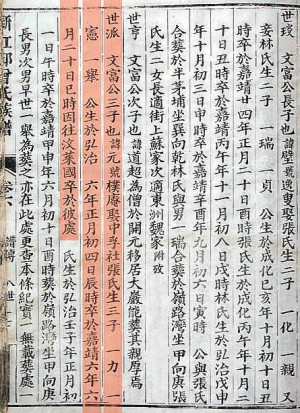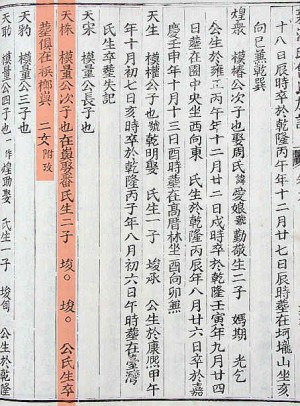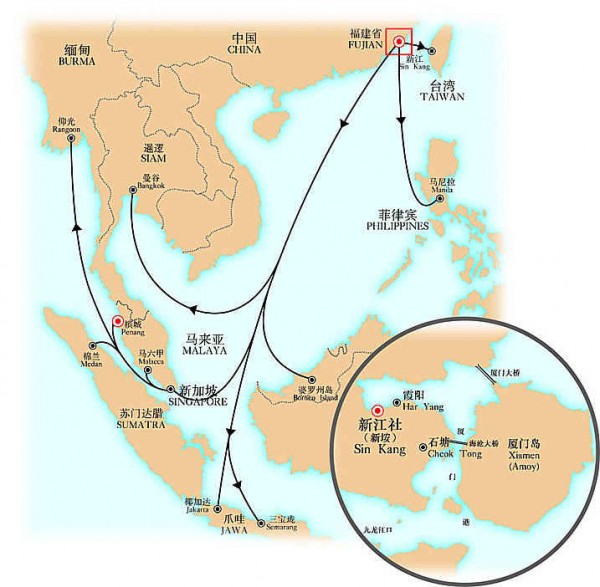
The first Sin Kang emigrant was Khoo Se Phai, an 8th generation descendant of the Khoo Clan, who travelled to Borneo and died there on the 20th day of the 6th Moon in the 6th year of the Jia Jing reign (1527) – (CLICK TO ENLARGE)

Khoo Mo Liang, was probably one of the earliest Chinese in Penang. His second son, Khoo Thean Choo, was born, bred, married, had children and was burried on the island – (CLICK TO ENLARGE)
According to The Genealogy of the Sin Kang Khoo and Chan Clans, the first Sin Kang emigrant was Khoo Se Phai, an 8th generation descendant of the Khoo clan, who travelled to Borneo and died there on the 20th day of the 6th Moon in the 6th year of the Jia Jing reign (1527).
When the Western colonisers came to South East Asia to scramble for the spice trade in the 16th century, the emigration of the Sin Kang clansman had already begun. The early Sin Kang emigrants went to the Philippines island of Luzon which was then occupied by the Spanish colonisers. This took place mostly in the last century (1522~1620) of the Ming Dynasty.
In the 17th and 18th centuries, many clansmen migrated to Taiwan, Dutch Batavia (now Jakarta) and Malacca with the repeal of the ban on maritime trade by the Manchu government. Since the rise of British power in the Far East, Siam, Burma (Myanmar), Singapore, Malacca, Kedah and Penang had been their favourite choices. Among these places, Penang saw the most Khoo immigrants in the 19th century.
Penang was founded as a British outpost by Captain Francis Light of the British East India Company in 1786. In the early days of its establishment, there were already a few Khoo clansmen on the island. Some of them were from Malacca and Kedah.
According to an estimation based on The Genealogy of the Sin Kang Khoo and Chan Clans, a Khoo clansman was born in Penang as early as 1775. He was Khoo Mo Liang, and was probably one of the earliest Chinese in Penang. His son, Khoo Thean Choo, was also born, bred, married and had children, and was buried on the island.
The first clansman whose birth and death were documented was Khoo Mo Liu, a 14th generation descendant of Chneh Pang. Born in 1752, he died and was buried on the island in 1795.
Between 1786 and 1800, there were at least 30 settlers of the Khoo clan in Penang. By 1816, the Khoo population in Penang was around 100. Most of them were enterprising traders and established businessmen. When the Cheng Soon Keong temple of their home village in China needed funds for restoration, they donated 120 Dollars in the name of the “Penang Tua Sai Yah Public Fund”. Following this, Leong San Tong Khoo Kongsi started taking shape.

